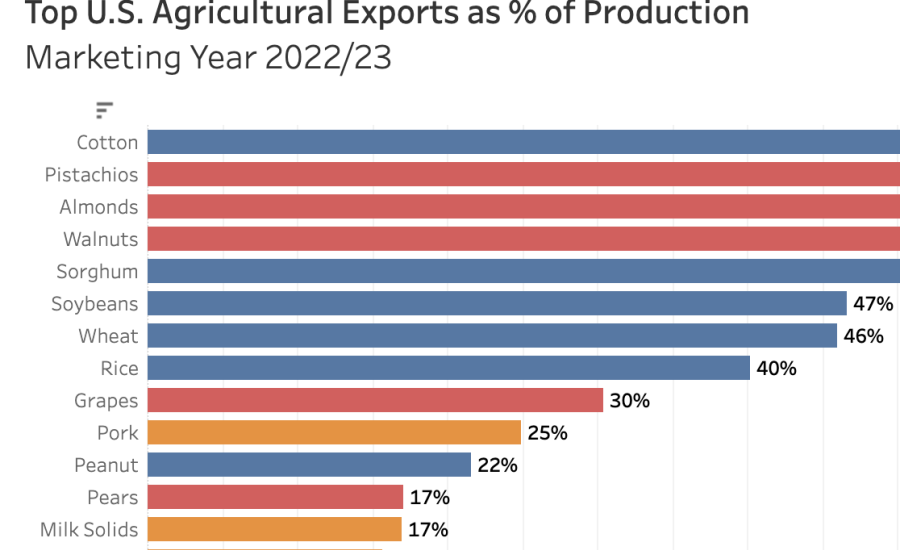Browse Data and Analysis
Filter
Search Data and Analysis
- 14 results found
- (-) Cotton and Hemp
- (-) May 2024
- (-) November 2019
- Clear all
Ukraine established a simplified procedure for temporary registration of genetically engineered cotton varieties only.
U.S. agricultural exports are a critical source of farm income. The USDA Economic Research Service estimates that on average 23 percent of the output of nonmanufactured agricultural products were exported between 2013 and 2022.
Early spring precipitations in Andalucía came as a relief, refilling water reservoirs. However, this allowed for only a marginal recovery in area planted to cotton, as rains arrived when planting plans were already in place and largely oriented to less water-demanding crops such as winter grains or early spring-planted sunflower.
The 2023 U.S. Agricultural Export Yearbook provides a statistical summary of U.S. agricultural commodity exports to the world during the 2023 calendar year.
Monthly report on crop acreage, yield and production in major countries worldwide. Sources include reporting from FAS’s worldwide offices, official statistics of foreign governments....
This monthly report includes data on U.S. and global trade, production, consumption and stocks, as well as analysis of developments affecting world trade in cotton.
The global cotton industry is still readjusting to lower post-pandemic demand, and Uzbekistan wasn’t spared the effects of the market overhang. Uzbekistan's strong vertical integration and government support for the industry have helped drive both its resiliency and recovery.
The previously forecast reduction in Mexican cotton production was not as severe as anticipated, due to a lower than expected reduction of planting in the state of Chihuahua.
MY2019/20 cotton imports are expected to decrease in line with decreased yarn production.
The Turkish cotton crop for MY 2019/20 is now estimated at 590,000 hectares and 800,000 MT (3.6 million bales).
China’s marketing year (MY) 2019/20 cotton consumption is lowered to 8.6 million tons, based on stagnant textile and apparel exports, low manufacturer confidence due to trade uncertainties....
Cotton imports for 2018/19 are lowered to 3.05 million bales due to competition from imported yarn and fabrics, a weak rupiah, and lower demand from export markets for garments.

